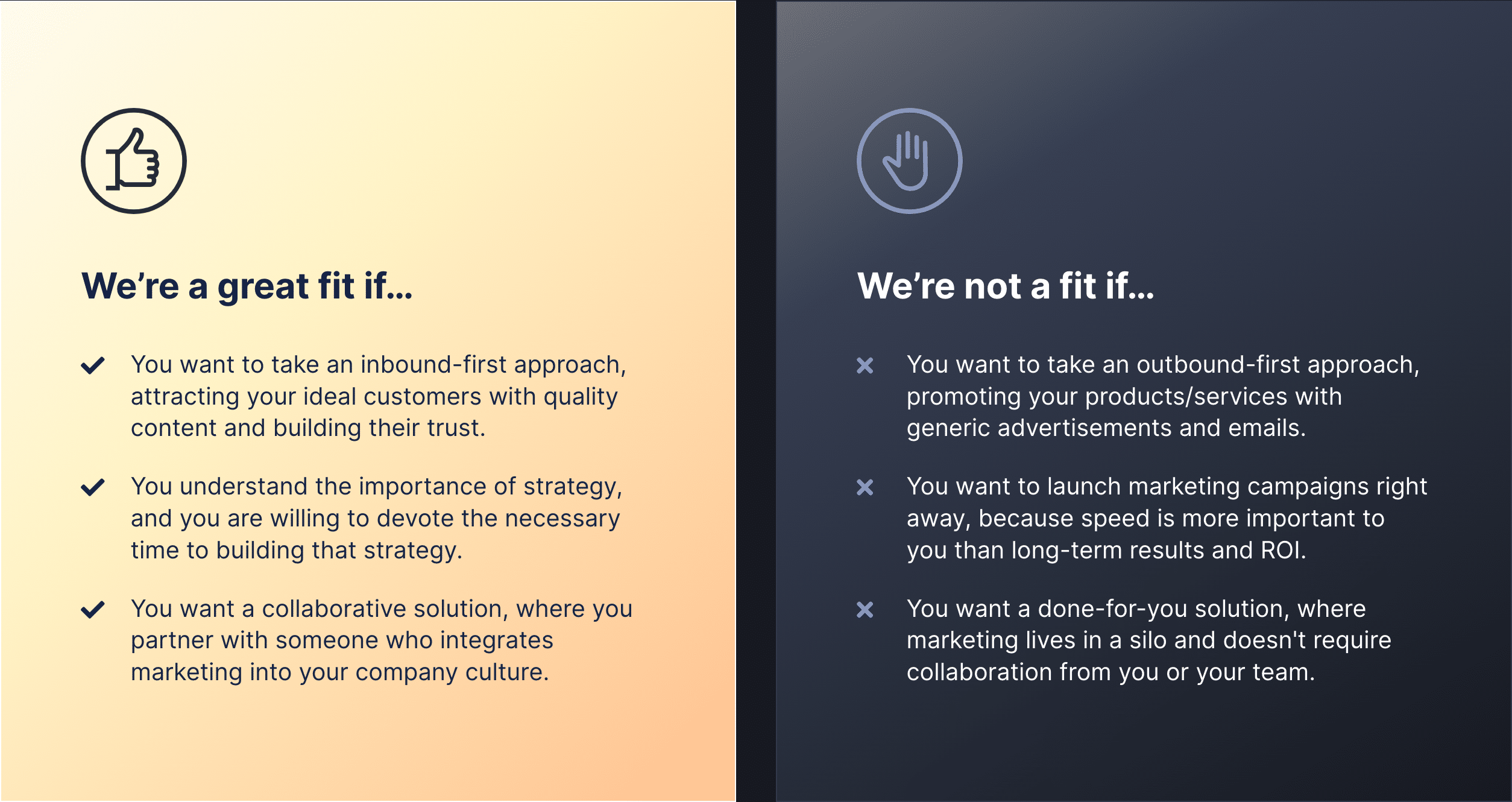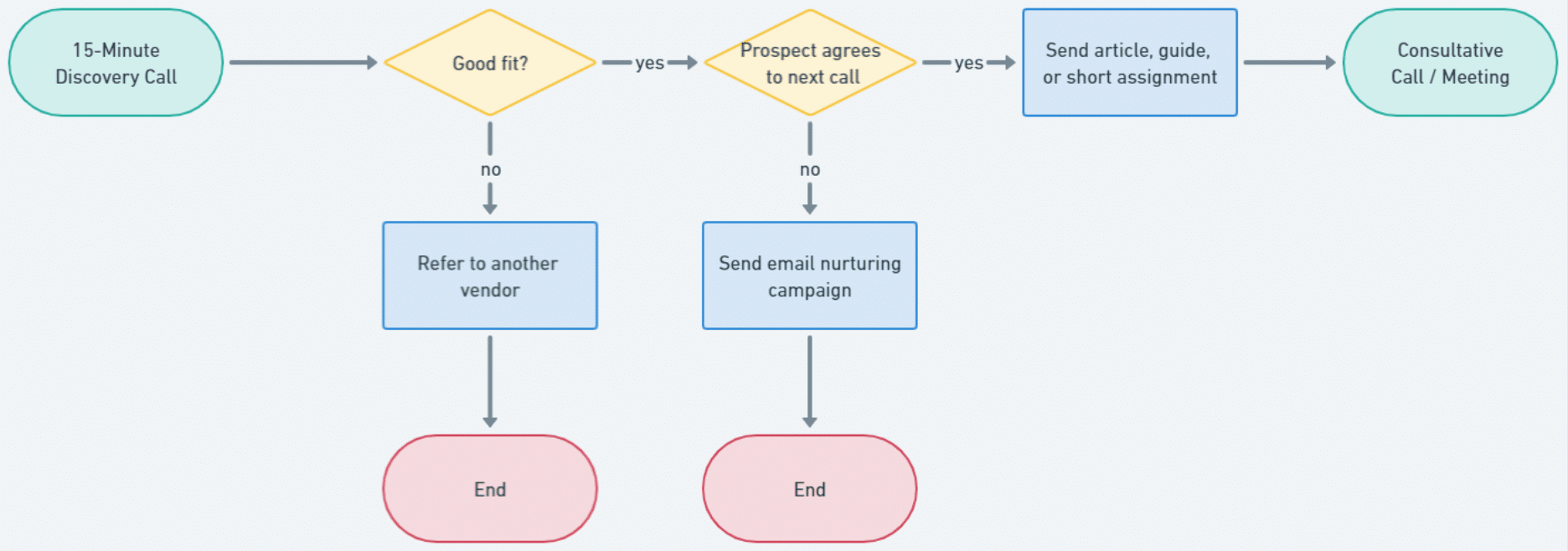
It’s a well-known issue that small businesses can waste a lot of time communicating with people they hope are leads, but who in fact are not suitable potential customers. For a range of reasons, these people are never going to buy the products or services on offer. The solution to this problem is to evaluate all potential leads as either good or bad fits, a process known as lead filtering and qualification. Without this process in place, there’s a very high risk of wasting time on the bad fits and spending too little time on the good fits that will contribute to your customer base and revenue.
Expert salespeople are skilled at handling this process during the presales phase and use a range of tools, such as CRM software, to filter and qualify their leads. For business leaders who aren’t highly involved in sales and marketing, this article will provide a practical guide with recommendations that can improve your lead qualification process right away.
What is lead filtering and qualification?

First, it’s essential to know the difference between lead generation and lead qualification:
Lead generation is the process of making people interested in your product or service, so that they are inspired to engage with your business either on their own or in response to some form of your marketing.
Lead qualification is the process of filtering the people engaging with you to determine if they are actually potential customers waiting to convert, or people trying to solve problems that you don’t solve. This is the most basic filter you should apply to all your leads: Can I solve their problem? Put another way: How well does my service or product align with their challenges?
A lot more has already been said about lead qualification, so let’s look at two of the better online definitions:
Lead qualification involves sorting through leads to find the best prospects that can be nurtured for conversion. While you may have several incoming leads, only a handful of these are likely to convert after passing through the sales funnel. Therefore, it is critical to focus on those with a higher chance of a conversion. (Source: bigcontacts.com)
Lead qualification is the process of organizing your potential customers in order of their likelihood to purchase, such as the ones that have already engaged with your sales team and given you a positive response. (Source: uplead.com)
Why is lead qualification important?
The main objective of lead qualification is to avoid wasting time trying to force a bad fit. As we’ve seen, filtering out bad-fit leads will save you precious time — time that should be spent on people whose needs match your solutions. These people have the highest potential to convert and, even more importantly, become satisfied long-term customers who advocate on behalf of your business and attract even more leads. In this way, lead qualification not only prevents you from wasting time, it also prevents you from missing opportunities.
Now that you know what lead qualification is and why it’s important, let’s talk about how to do it.
Qualify leads with your target buyer in mind
Before you can develop a lead qualification process, you need to have defined your ideal customers. Remember, it’s critical that you don’t target too broad an audience, which makes it impossible to properly market to the highest potential people. Defining the highest potential customers is a fundamental step in any marketing strategy, and is known as creating buyer personas.
If you haven’t targeted your buyers yet, this guide will help you create your own buyer personas. Essentially, creating buyer personas means developing idealized but realistic profiles of your three or four highest potential customers, including their roles in their organizations, the problems they’re trying to solve, and personal attributes that affect their decision-making.
Referring to your buyer personas will help you quickly identify which leads are worth pursuing as prospective customers, and which can be ignored because they do not match your offering and goals. A prospective customer who you can determine aligns with one of your buyer personas is known as a qualified lead.
Identify types of leads
Now that you know who you’re targeting and can determine if a lead is qualified, it’s useful to categorize them. There are two categories of qualified leads: A marketing qualified lead (MQL) is in your target market and engaging with your marketing material, for example, by downloading a content offering from your site. They are a potential customer, but they haven’t entered your sales funnel and there’s no dialogue happening yet.
A sales qualified lead (SQL) is further along the path to becoming your customer. They have engaged with your marketing and are communicating with you or your sales team. Essentially, they are ready to buy.
MQLs and SQLs are handled separately in enterprise-level CRM applications, and they require different kinds of outreach and engagement. Ideally, an MQL becomes an SQL once your marketing has persuaded them that purchasing your services or products will solve their problem.
3 steps to systematically qualifying leads

For the solo SMB leader or small sales team, the steps outlined below will help you qualify your leads. This qualification process is relatively simple and appropriate for companies who have relatively high-value offerings — for example, professional, legal, technology, or consulting services. It can be applied and adapted to various other industries in the B2B or B2C space, but a filtering process like this will be less applicable if you’re in a low-cost/high-volume business.
1. Publish content that filters out bad fits
Your first line of defense against contact from unsuitable customers is your website copy and the material you regularly publish to your site. For instance, by being transparent about who you serve, where your pricing fits in the market, and the types of clients you will and won’t work with, you will naturally filter out bad fits who are looking for something else or simply can’t afford you. Here are some examples:
Case study that implies a certain size of good-fit customer with certain needs
Pricing page

2. Require key qualification criteria upfront
Gather information on forms and sales calls that will show you where their needs and resources align with your offerings and requirements. Questions can include their company size (headcount, revenue, etc.), the problem they need to solve, and how urgently they need to act to solve it. In the world of sales, these types of questions form the BANT framework (Budget, Authority, Need, Timing) and are used to filter out bad fits as early as possible. You can get an idea of the types of questions to ask in this free download, Hubspot’s 101 Sales Qualification Questions.
There’s an important caveat here: Don’t demand too much output from a lead or you may filter out the good fits along with the bad. For example, data shows that having a 10-question contact form is long enough to significantly reduce the number of form submissions, regardless of how closely your offerings match someone’s needs and budget. Similarly, requiring a phone number may filter out individuals who are researching but not ready to speak to a sales person.
Something that works well is having a two-part form, where the first is short but an optional extended form follows.
3. Filter your leads by potential
Now that you’ve selected only the people you believe are actual leads, you don’t want to waste their time or yours. A short initial/pre-qualification phone call can often clarify your respective positions before either of you invest any more energy into the relationship. These are sometimes called a ‘discovery call’. Keep the commitment small (10–30 minutes), enough time to gather the information you need to decide to move forward or not. Be genuinely curious to understand their situation and their problems, and whether you might be able to solve them.
This initial call could be with one of your skilled team members, but likely not with your top salesperson. If it goes well, immediately schedule another longer call for later in the week or early the following week. If you realize you’re not a good fit for each other, now is a good time to recommend a more appropriate solution for them, such as another vendor.
If you recognize a potential good fit scenario, the follow-up call will be your main opportunity to convert this lead. To make this call as productive as possible, share some useful information beforehand with the lead. For example, a link to some resource that clarifies common misconceptions about your industry, or an explainer on how your solutions are priced, etc.

You will be able to learn a lot by how they respond. If they come back with questions or comments, it shows they are motivated and actively absorbing information to make an educated decision. This indicates a higher-potential customer than someone who is merely grazing for what’s available, far from any decision-making stage.
The longer, more in-depth call will be the opportunity to dig deeper to find out what the lead is truly in need of, and how your solutions could be a match. It’s also the time when a high-potential lead who has engaged with the material you’ve shared will be able to confirm their investment in the growing relationship.
You may find that you’re a perfect fit for each other, or you’re a good fit but they aren’t ready to make a decision. Or, you may learn that you’re not a good fit at all, which is almost as valuable as the first result, because you’ve filtered out a potentially time wasting bad-fit lead.
If they are a good fit but they aren’t experiencing enough pain to make a change yet, the lead should be tagged as MQL — marketing qualified lead — so they continue receiving your emails with links to your educational content and special offers.
How to handle leads who aren’t a good fit
The obvious message here is don’t burn bridges. The lead qualification process is harsh and at every step, some people will be disqualified and filtered out. But despite these people not being a good fit for your business, it’s still important to provide them with as much value as you can. This could mean sharing useful material with them upon parting or directing them to another company who might be better suited to meet their needs.
Also, just because they aren’t a good fit for you now doesn’t mean that will always be the case. You or they may evolve to suit each other’s requirements, and as long as you leave them with a positive impression, they may very well return in the future. Even if they don’t, they’ll be inclined to spread the word of their experience with you, which can make a powerful impact on your reputation. It’s therefore up to you to ensure whether this impact is positive or negative.
Always be adjusting

The three steps outlined above create a process that will have you filtering your leads, optimizing your time, and eventually growing your customer base and revenue. There’s just one more thing that is crucial to the success of this process, and it applies to all areas of your marketing: constant reassessment and tweaking.
Basically, once you start filtering your leads, you have to decide how picky you’re going to be. When you’re in need of leads, you can lower your standards to increase the volume of incoming contacts. For example, by reducing or removing the filtering questions on your contact form, you will weed out fewer of the people who don’t match your personas or aren’t 100% serious about finding a solution to their problem.
On the other hand, if you’re in the enviable position of having more leads than you can handle, you can raise the bar to filter for ever more desirable potential customers. This situation deserves a more thorough look.
Let’s say you’re capturing too many leads with a free offer. You’re bringing a high volume of contacts into your CRM, but many of them are not what you consider to be MQL. This problem could relate to your offer itself. For example, it may be appealing to too broad an audience or not the right audience.
If the offer is well targeted but you still have this issue, consider un-gating the content (not requiring a name or email to access). Then, within the free offer, provide something of additional value and make that content gated. This way, the people who are curious about your business but not motivated to act can see your free, un-gated content and be exposed to the value you’re providing, while you’ll only be capturing the leads from the people who are ready to take action.
Conclusion

Lead filtering and qualification directly impact the success of your marketing and the health of your business. Qualified leads turn into satisfied customers, and they contribute not only to your bottom line but to your reputation as well, compounding their value. Making effective qualification a standard part of your sales process will also save you time and avoid the frustration and negativity of struggling with bad-fit customers. It’s not difficult, and this guide should get you started.